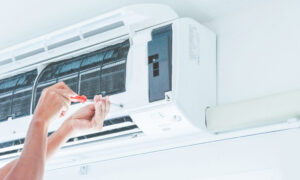Introduction
Keeping your house clean when your furry friend is in heat can be a daunting task. As female canines go through this regular regenerative stage, they experience a horrendous release that can prompt undesirable stains and waiting smells all through your home. In any case, with constant endeavors and the execution of vital measures, you can keep your dwelling place clean and new while giving fundamental consideration and backing to your canine buddy during this organic event.
Understanding the Heat Cycle
What is the Heat Cycle?
Before we plunge into the cleaning tips, it’s fundamental to comprehend what the intensity cycle is and what it involves. The intensity cycle, otherwise called the estrus cycle, is a characteristic conceptive cycle in female canines. During this time, your canine will encounter physical and social changes that show she is prepared to mate.
One of the most observable indications of the intensity cycle is vaginal dying, which can endure anyplace from a couple of days to half a month. This draining is a consequence of the expanded chemical levels and the shedding of the uterine covering, setting up the body for possible pregnancy.
Stages of the Heat Cycle
The heat cycle typically consists of four stages:
- Proestrus: This is the underlying stage when your canine’s body plans for mating. You might see expanding around the vulva and some light dying.
- Estrus: During this stage, your canine is rich and prepared to mate. The draining turns out to be more noticeable, and she might show conduct changes, like expanded anxiety and allure to male canines.
- Diestrus: If your dog becomes pregnant, this stage occurs during pregnancy. On the off chance that not, it’s a time of hormonal downfall and groundwork for the following intensity cycle.
- Anestrus is the resting stage between heat cycles, during which your canine won’t show any signs of power.
Cleaning Strategies for a House with a Dog in Heat
Set Up a Designated Area
Making a particular space for your canine during her intensity cycle is a profoundly effective technique for dealing with the inescapable wreck. This assigned region could be a room with floors that are not difficult to perfect, similar to tile or flooring, or a space covered with either pup cushions or old towels. By limiting your canine to this assigned region, you can decrease the likely spread of blood and release all through your living space.
Use Absorbent Materials
Selecting spongy materials can essentially work on your way to deal with taking care of the wreck. Using things, for example, little dog cushions, matured towels, or expendable diapers demonstrates success in retaining the horrendous release, working on the cleanup cycle, and protecting your floors and furniture from expected finishes.
Frequent Cleaning and Disinfecting
In the midst of the heat cycle, maintaining regular cleaning and disinfection is essential. Employ an enzymatic cleaner formulated explicitly for pet stains and odors to eradicate any remaining blood or discharge. These cleaners consolidate proteins that separate natural matter, ensuring a thorough cleaning and disposal of steady scents.
Protect Furniture and Bedding
To avoid stains on your furniture and bedding, contemplate using washable covers or repurposing old sheets during your dog’s heat cycle. This safeguard works with more straightforward cleaning and is a defensive measure against expected long-lasting harm to your important things.
Groom Regularly
Regular grooming of your dog during her heat cycle proves effective in reducing the dispersion of blood and discharge in your living space. Delicately cleanse her genital area with a warm, damp cloth to eliminate any dried or fresh discharge, and use a brush to remove any loose hair or debris from her coat.
Stay Patient and Positive
Keep in mind that the heat cycle is a natural occurrence, and your dog has no influence over it. It’s crucial to maintain patience and a positive attitude during this period. With some additional effort and the appropriate cleaning approaches, you can uphold a tidy and cozy home for both you and your four-legged companion.
Additional Tips and Considerations
When to Consult a Veterinarian
Albeit the intensity cycle is a characteristic peculiarity, it’s indispensable to remain cautious for any oddities or potential medical problems. Assuming you notice unreasonable dying, release with an uncommon smell, or some other alarming side effects, looking for surefire direction from your veterinarian is basic.
Spaying Your Dog
If you want to raise your canine, contemplate fixing her following her hidden or second power cycle. Fixing serves not solely to prevent undesired pregnancies but more kills the need to manage the challenges associated with the disaster area and direct changes related to the power cycle.
Be Prepared for Behavioral Changes
During the heat cycle, your dog might manifest behavioral shifts, including heightened restlessness, a greater need for attention, or occasional attempts to escape and explore. Be prepared for these changes and guarantee your canine gets plentiful activity, mental excitement, and close oversight to address and deal with her way of behaving successfully.
Patience and Consistency are Key
Maintaining a clean home during your dog’s heat cycle demands patience, consistency, and a proactive mindset. Adhere to your cleaning schedule, and feel free to seek assistance from family members or explore the option of hiring professional cleaning services if necessary.
Conclusion
While dealing with a canine in intensity can represent its portion of difficulties, utilizing successful procedures and keeping an uplifting perspective permits you to maintain a spotless and welcoming home for both you and your shaggy buddy. Patience and consistency are key, and seeking professional help when necessary is a viable option. With a solid understanding of the heat cycle and the application of practical cleaning methods, you can gracefully navigate this natural process, fostering a happy and healthy environment for your beloved pet.



































